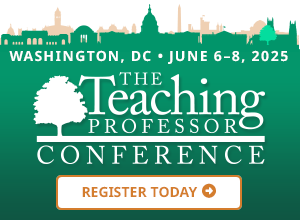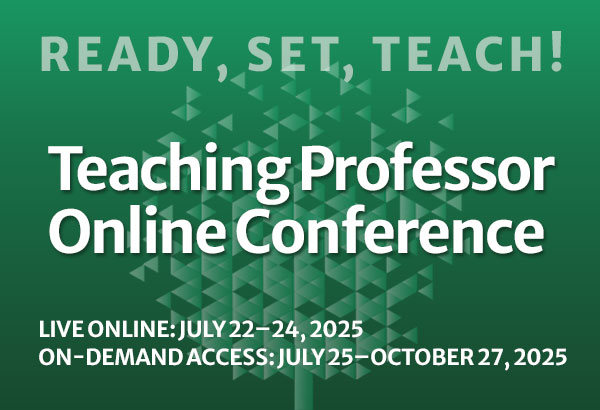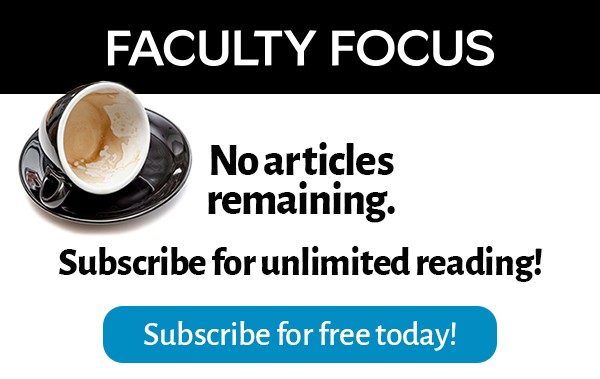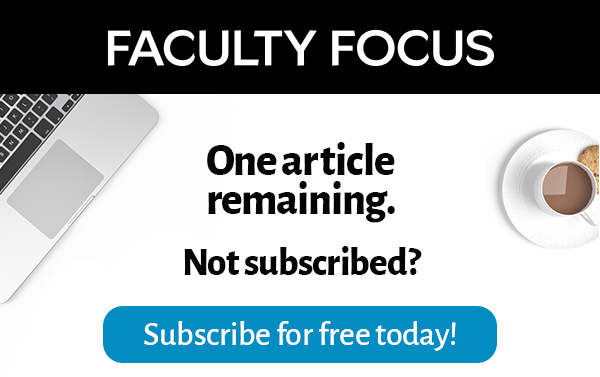Experiential learning is on the rise (Roberts & Welton 2022), perhaps because it can be a pathway to increased student engagement. But the term “experiential learning” is sometimes used interchangeably with “applied learning,” which runs the risk of clouding the specific benefits of each approach. To alleviate some confusion, my goal here is to explain the hallmarks of both applied humanities and experiential learning approaches, as well as what each mode of learning can offer to students. I hope to facilitate a clearer understanding of both experiential and applied learning so that instructors can use these approaches strategically, when appropriate to course goals, to help their students develop intellectually, personally, and professionally.
While some informal definitions of experiential learning suggest that it’s simply learning by doing, the Association for Experiential Education defines experiential learning as “a teaching philosophy that informs many methodologies in which educators purposefully engage with learners in direct experience and focused reflection in order to increase knowledge, develop skills, clarify values, and develop people’s capacity to contribute to their communities” (n.d.). The experience in which students engage can take many different forms (such as internships, field trips, role playing, and simulations, just to name a few), but within this definition, thoughtful reflection is essential in helping students to process what an experience has taught them and how it connects to goals of a course or of their education more broadly (Beard 2022).
Experiential learning can provide students with an opportunity to engage with the instructor’s discipline in a way that sparks curiosity and expands students’ understanding of the field – and perhaps even the world. One example is the use of virtual reality to allow students to feel as though they are actually walking through eighteenth-century London theaters like Drury Lane or the Haymarket Theater without the time and expense of travel to a physical location. A virtual experience like this one can radically change how students understand the architecture of the theaters. Reflection on the immersive experience can allow them to take the perspective of the attendees of these theaters, with all of the socioeconomic implications of the areas available to different audience members.
Experiential learning can also help instructors to teach more authentically, allowing further possibilities for aligning their teaching with their pedagogical priorities. For instance, to help students widen their perspectives, an instructor might devise a role-playing scenario that puts students in the shoes of a fictional character who differs from that student, followed up by a reflection on what insights, limitations, or questions made the experience impactful. Such experiences can help engage and enthuse students to be attentive to related material in the rest of the course, and students who perceive their instructors as more authentic indicate higher levels of learning and understanding (Johnson & LaBelle 2017).
Applied learning involves authentic tasks that require students to use the skills and knowledge bases accrued through coursework to solve real-world problems or meet real-world needs. Applied approaches are frequently associated with the sciences, but they are also useful for students in the humanities and social sciences (medical humanities and applied linguistics are among the most well-known examples). For instance, students might apply principles of narrative analysis to make sense of a patient’s medical history in a clinical setting, or students might conduct a historical analysis on a textual document in an attempt to date it for a manuscript library. In each example, students would use skills and knowledge from their coursework to tackle a specific problem or question that engages a real-world (rather than merely theoretical) issue.
Applied work honors the goals and needs of students from a very practical standpoint. A recent survey shows that students value the parts of their education that directly prepare them for professional work they will undertake (Princeton Review 2024). While many classes teach skills and content that can transfer to a range of professional settings, students themselves do not always intuit how to make that transfer happen. Applied work gives them ready practice in how their education specifically connects to various aspects of potential future professional work. This helps meet students’ concerns about their education, particularly since students’ worries about job prospects are the biggest challenge in recruiting students into humanities courses or majors (Muir & Oliver 2021).
So, it is imperative to help students of the humanities understand how what they learn in their coursework prepares them for careers, and to do so explicitly rather than implicitly. Helping students to understand how skills learned in humanities courses can be practically applied may also help more students to see why majoring in a humanities discipline is something that they can do without jeopardizing their career prospects, as some students and parents may think (Babiracki & Cortada 2024).
You might be saying to yourself that there is, or can be, considerable overlap between experiential and applied forms of learning. If so, you’re absolutely right. Applied work can involve an experience that a student undergoes, even including a reflection task, and that means that some applied learning can also be experiential. But let’s return to one of my previous examples: the role-playing scenario in a literature class as an example of experiential learning. In that case, students engage in an imaginative experience in which they act like a particular character in a novel, interact with others portraying other characters from that novel, and then reflect on that role-playing experience. This is experiential learning, in that they may begin to take the perspective of that character and then reflect on insights and questions that arose for them during that activity. This may help the student better understand the novel’s cultural context, competing demands and motivations for different characters, and the social restrictions facing some characters. But since it does not help the student solve a real-world problem, such an activity is not applied learning.
Both applied and experiential approaches are important tools for educators. Students need training for professional work that they understand how to apply, which makes applied approaches key for robust professional preparation. But students also need experiential learning so that they can develop a love, or at least appreciation, for lifelong learning as well as develop the ability to both raise and satisfy their own curiosity. Offering applied approaches without the kind of experiential learning that sparks wonder and raises intriguing questions can make a student’s time in college too narrowly focused, which can impede students’ ability to grow personally and intellectually. But not including practical applications in a students’ course of study can make it difficult for them to know how their education can be transferred into professional contexts.
In arguing for the importance of both of these approaches, I don’t mean to insinuate that other types of learning hold no value. To give just two examples, close reading activities and class discussions might be neither experiential nor applied, but they each offer pedagogical benefits by building up students’ skills within their discipline. Further, instructors might find that introductory courses or those that are prerequisites for other courses are harder arenas in which to add applied or experiential work because a great deal of foundational knowledge may be needed to progress in the field. So while not all courses might employ one or both these approaches, I hope that differentiating between applied and experiential work helps instructors who do use these approaches to think more critically about which might suit the needs of their students and their course best.
Kathy Hansen, Ph.D., is Associate Director of Multimodal Communication Programming at Colby College and holds joint appointments in the Center for Teaching and Learning and the Program for Academic Success and Transformative Learning.
References
Association of Experiential Education. n.d. “What is Experiential Education?” Accessed October 10, 2024.
Babiracki, Patryk J. and Cortada, James W. 2024. “The ROI of a History Degree.” Chronicle of Higher Education, July 24. https://www.chronicle.com/article/the-roi-of-a-history-degree
Beard, Colin. 2022. Experiential Learning Design: Theoretical Foundations and Effective Principles. Taylor & Francis. Proquest Ebook Central.
Johnson, Zac D. and LaBelle, Sara. 2017. “An Examination of Teacher Authenticity in the College Classroom.” Communication Education 66 (4): 423–39. doi:10.1080/03634523.2017.1324167.
Muir, S., & Oliver, Y. 2021. Strategies for Recruiting Students to the Humanities: A Comprehensive Overview. National Humanities Alliance.
Princeton Review. 2024. College Hopes and Worries Survey. https://www.princetonreview.com/college-rankings/college-hopes-worries
Roberts, Jay and Welton, Anna. 2023. “The 10 Commandments of Experiential Learning.” Inside Higher Ed, August 2. https://www.insidehighered.com/advice/2022/08/03/foundational-best-practices-experiential-learning-opinion






